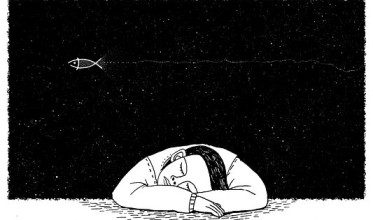
Burning Rice by Eileen Chong is a poem about intergenerational connection and a link to one’s heritage, explored through various themes such as the simple act of cooking food in this poem. The poet speaks about her accidentally burning brown rice by miscalculating the amount of water needed to cook it, and ruining both the rice and the cooker in the process. Brown rice needs more than twice the amount of water needed for cooking white rice. This act of burning the rice is followed by the elaborate description of the process and hard work and the people involved in growing rice, the copious number of generations that are putting their hands towards growing the very same rice the poet burned. The poet then goes on to compare the burnt rice with her ancestor’s ashes, linking the act of wastage of food with a macro wastage of human life and effort.
The poem is an exploration of how food can connect generations situated far away both geometrically and culturally. The poet begins with a defensive line, perhaps an explanation, that she did not mean to burn the rice that day. And then continuing to delineate the process of growing rice, which is “never easy”. The description uses words like “generations”, “day after day”, and “long hours”, which put the emphasis on the multiple generations of men, women, and children and the considerable amount of time and effort they put into the act of growing rice, under harsh conditions, like the sun bearing down on them.
Burning Rice | Analysis
The poem “Burning Rice” by Eileen Chong is one of her other poems in the titular collection published in 2012. This poem focuses on the act of growing and consuming food, the one thing that connects oneself to their heritage and culture. Wherever one goes, the one thing that can provide you with a direct and interactive experience closest to the culture one wants to explore, is to have their food, especially traditional. For many Asian and south-Asian communities growing away from home, in other countries, the one thing that can bring them close to their culture and remind them of home is food. To recreate the food that one ate in their home, surrounded by their family and community, is to feel exceptionally near to the idea of home. To recreate food is to build a home every time. However, in this poem, the poet explores the intergenerational conflict that arises when the act of making food goes awry and there is a connection that one feels while thinking about throwing the food away. The poet accidentally burned the brown rice she was making and contemplates the history of rice and the amount of hard work that goes into each grain of rice, from sowing the paddy to polishing the grain. With this thought process comes the question of life and death itself.
The effect that the burnt rice has on the poet goes beyond the slight inconveniences experienced in daily life, of having to throw away the food, clean the cooker, and then make the rice all over again. This effect extends to the contemplation of the spiritual. Cooking rice for the poet is the ultimate step in the long and tedious procedure that the poet places almost next to the divine status. The burnt rice that is stuck to the bottom of the cooker is connected to the lengthy process of sowing the rice, working in the fields all day, and finally processing the grains to perfection. This link is stronger for the poet as it is not simply a process of growing food but also a link to the generations that planted and harvested rice throughout their lives. Consequently, the last line comes off as an act of betrayal and unfaithfulness to one’s tradition, family, and cultural values. The poet stands dumbfounded at the sight of the charred rice and this brings forth the imagery of looking at an ancestor’s ashes, consociating the idea of food and life intricately with each other.
Chong’s poem is filled with the imagery of food, family, and connection. Thematically, the poem crosses the boundaries of distance, geography, and time in order to establish the links between culture and generational inheritance. The lone figure of the poet is dissonant with the communal nature of farming. This enhances the loneliness and the distance between the poet and her home. The elements of loneliness and concerns, as well as nostalgia and a sense of belonging generally observed in the literature of the diasporic people around the world, are used in the poem. However, while primarily writing from the perspective of a diasporic writer, the poet strives toward carving a niche, a space for the diasporic community as well as immigrants’ voices within literature, while also maintaining a kinship with a shared heritage and culture.
“Burning Rice” explores this connection with a bitter tone and navigates the fissures caused by the generational and chronological distance between the homeland and oneself. The poet does this through a juxtaposition of the personal and the communal, the navigation of the embedded memories and experiences of the homeland within the everyday happenings, and simple acts such as cooking rice.
The rice is an emblematic representation of the complex nexus of attachments and the sense of longing for a home, while at the same time, a symbol of the ancestral hardship. The Various textures and imagery is integrated within the poem, offering the reader a seamless sensory participation in the act of making rice from the seeds. Eileen Chong, in this poem, creates a timeline and a story about love, sorrow, tradition, and compassion. Her primary talent is the capacity to define an almost tactile sense of place through memory and imagination.
One might assume a sense of guilt while the poet looks at the ancestor’s ashes in a bowl through the charred rice. However, the poet herself talked about how this is not an admission of guilt as much as it is an exploration of the spiritual and genealogical connection one shares with their culture and how it is linked to the perpetual question and cycle of life and death, and what it means to love the homeland while simultaneously growing farther away from it.
“Burning Rice” is made up of beautifully and painstakingly produced musings on the complicated web of ties, loss, and longing, which are so rich in imagery and narrative that they transcend the poet’s own ethnic, cultural, and geographical background. The poem is a neat and simultaneously chaotic mixture of heart, intellect and soul.





